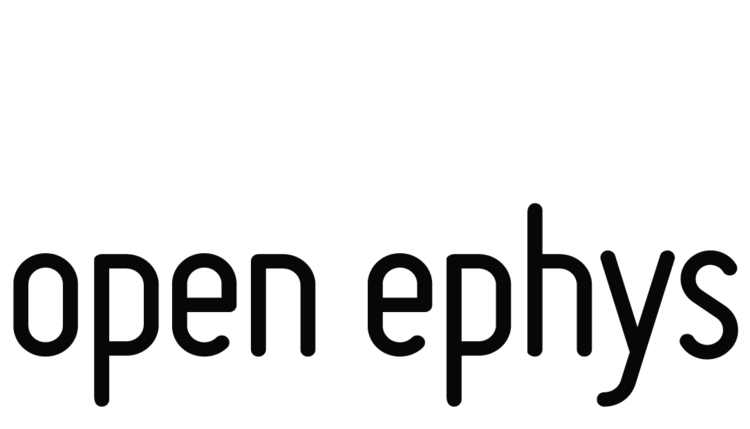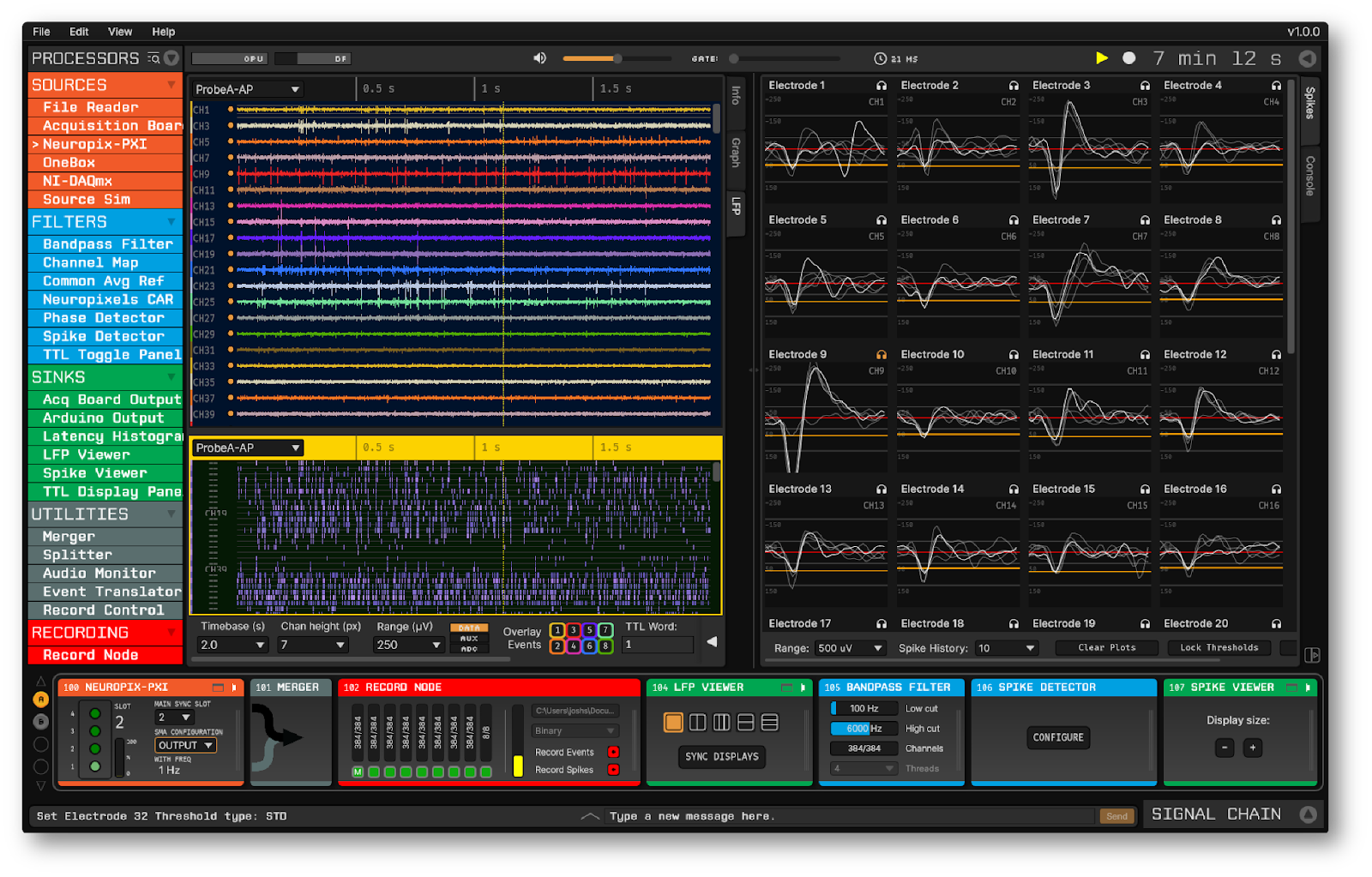Long-awaited updates to two essential Open Ephys tools, the GUI and the Acquisition Board, are now available.
The original goal of Open Ephys was to make extracellular electrophysiology experiments more affordable and scalable by developing open-source alternatives to proprietary data acquisition systems. To realize this vision, we made two key innovations: a USB-based acquisition board for streaming neural data to a computer and a plugin-based GUI for visualizing that data and writing it to disk. Almost 15 years later, these tools are still in widespread use, as they deliver most of the functionality of competing commercial systems while remaining extremely cost effective.
Given the importance of the Acquisition Board and GUI within the neuroscience community, we wanted to update them to ensure they could be used and maintained over the long run. After refining the designs and incorporating feedback from users, we’re thrilled to be able to share these new and improved tools with the community.
Open Ephys GUI v1.0
The latest release of the Open Ephys GUI represents a significant leap forward for software trusted by hundreds of labs worldwide. The GUI has been used to collect data for 500+ publications, and the previous version (0.6.7) has been downloaded over 4,000 times since it was released in March 2024. Building version 1.0 involved updating almost every aspect of this software: streamlining the user interface, modernizing the code base, and ensuring it can handle innovations in ephys technology expected over the next decade.
The updated GUI retains its familiar interface while introducing quality-of-life improvements across the board. The main window now supports side-by-side visualizers, includes a built-in console, and provides centralized access to all signal chain parameters via the Graph Viewer. Under the hood, multi-threaded filtering reduces processing latencies, while the brand new real-time synchronization algorithm achieves unprecedented precision (<0.1 ms drift over three days of continuous operation). We’ve also added explicit benchmarks for different hardware configurations, demonstrating comfortable acquisition from 32 Neuropixels 2.0 probes or 5760 channels from a single data source. Practical upgrades include signed macOS binaries (eliminating security permission hurdles) and a new headless mode that supports automated testing—now triggered with every pull request as part of our expanded test suite.
Version 1.0 represents our commitment to releasing high-quality software. We set rigorous standards for stability and testing, which are essential for software of this complexity, but time-consuming to implement. While we’ve been fortunate to secure BRAIN Initiative support for two full-time engineers to assist with this effort, projects like this would ideally benefit from far greater resources. These constraints aren’t unique to Open Ephys. The field often struggles to coordinate development efforts when researchers (ourselves included) must prioritize building new tools over collaborative maintenance. Yet if we want to accelerate progress, we’ll need to collectively invest in shared infrastructure. The Open Ephys GUI—with its cross-platform compatibility, open-source codebase, and plugin architecture—offers one potential foundation, but we’re equally committed to supporting better solutions should they emerge.
To try it out, head to open-ephys.org/gui and download an installer for your platform of choice. Existing users will recognize the familiar setup process, while new users can jump in quickly with our default configurations for Open Ephys Acquisition Boards, IMEC’s Neuropixels hardware, or a File Reader (for hardware-free testing).
Need help getting started? Don’t hesitate to reach out to our new GUI-specific help line at gui@open-ephys.org. We’re also available to assist with migrating any custom plugins your lab uses to v1.0. There have been some updates to the plugin API, but overall the process should be straightforward.
The v1.0 milestone is a testament to the community’s collective effort. From bug reports and feature requests to plugin contributions and research publications, every contribution has directly shaped the software’s evolution. We’re motivated by seeing how these tools enable your work, and we look forward to continuing this collaboration!
Acquisition Board 3D
We’re excited to introduce the third-generation Open Ephys Acquisition Board, and the first with 3D head tracking capabilities. Similar to GUI v1.0, it’s been redesigned for reliability and future expandability. Key features include:
Modern design workflow: We’ve transitioned the circuit board design from Eagle to KiCad, aligning with open-source hardware best practices
High channel count: Supports up to 512 channels of neural data. Use multiple boards in parallel to expand even further.
Precision motion tracking: Headstage-mounted inertial measurement units (IMUs) can be used to acquire head orientation data and rotate a commutator based on an animal’s head movements
The Acquisition Board 3D and compatible Torque-Free Commutators are available for purchase through the Open Ephys store, or by requesting a quote from info@oeps.tech. All devices are currently in stock and ship worldwide from our Lisbon manufacturing hub.
To utilize the 3D tracking features, you’ll need one of our compatible headstages, available in 16-channel bipolar, 32-channel, 64-channel low-profile versions. These headstages maintain backward compatibility with existing SPI tethers.
The hardware works automatically with the Acquisition Board plugin for Open Ephys GUI version 1.0. This plugin can be easily added by selecting the “Acquisition Board” default configuration or by opening the GUI’s built-in plugin installer (^P on Windows/Linux or ⌘P on Mac). You’ll also need to add the Commutator Control plugin downstream of the Acquisition Board to process the real-time head position data.
We also offer expert-led training, available either with your Acquisition Board purchase or as a standalone service. Our approach keeps hardware costs fair by not inflating prices to cover support—instead, you pay only for the services you need. Every training session is conducted by experienced educators who specialize in getting labs up and running quickly, with content tailored to your specific experimental needs.


